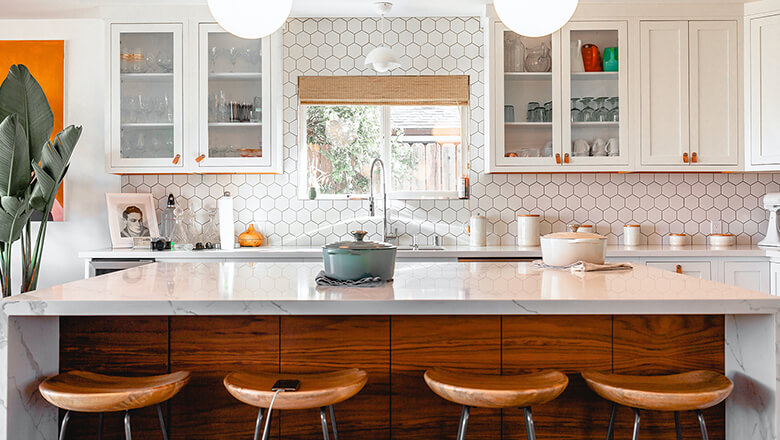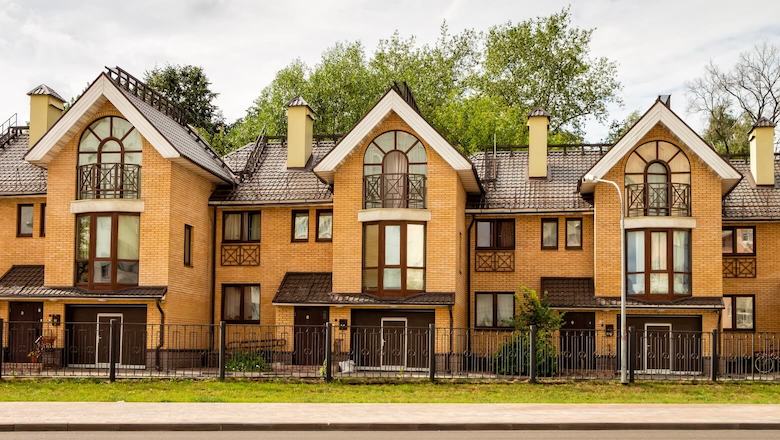The Cost of Buying a Fixer-Upper
It’s not your imagination: Buying a home has gotten more expensive over the last couple of years. In the fall of 2021, the Case-Shiller U.S. National Home Price index rose a stunning 18.6% in a single year. Adding to the high cost of homeownership is the fact that home loan rates also soared. In the fall of 2022, the average interest rate on 30-year mortgages was 6.12%, while a year earlier, it was a super low 3.03%. In other words, you’re going to pay a lot more for both a house and the money you borrow to fund the purchase.
These economic fluctuations are among the reasons that many people are contemplating buying a fixer-upper. They hope to find a lower-priced house that they can rehab (or pay someone else to renovate) in order to own a piece of the American Dream for less.
However, though buying a fixer-upper home may seem like an enticingly affordable option, the cost of remodeling it could wind up being more than you’d planned.
Just how much does it cost to fix up a house? Let’s break down the most common costs associated with gutting a house and remodeling, so you can make an informed buying decision. Read on to learn:
• What’s a fixer-upper?
• What are the pros vs. cons of buying a fixer-upper?
• How can you plan to renovate a home?
• How much will a fixer-upper really cost?
• How can you fund fixing up a home?
What Is a Fixer-Upper?
What exactly is a fixer-upper? It’s a home that’s in need of significant work. In many cases, these are older houses with much deferred maintenance or simply a lot of dated, well-worn features.
A fixer-upper might be a home from 100 years ago with an insufficient electrical and heating system, as well as a roof in need of replacement. Or it could be an apartment with a very old and dated kitchen and bathrooms. These residences might be livable, but they require an infusion of cash and work to make them comfortable by today’s standards.
Pros and Cons of Buying a Fixer-Upper
Buying a fixer-upper home has upsides and downsides. For some people, a fixer-upper can be a terrific way to enter the ranks of homeownership. For others, it could wind up being a frustrating source of bills and stress.
First, let’s consider the pros of buying a fixer-upper:
• Lower price. This can make it easier to become a homeowner.
• Lesser competition. Many home-shoppers may shy away from taking on this kind of project.
• Control. The ability to renovate a home to suit your taste.
• Profit. The opportunity to flip, or resell, the home and make money by doing so.
In terms of negatives, consider these points:
• Money required to renovate. Although you may be able to buy a fixer-upper at a bargain price, you’ll have to come up with funds for the renovation.
• Going over budget. Often, when renovations get underway, you’ll hit unexpected situations that require more money to properly complete the job.
• Taking longer than expected. Closely related to the point above about going over budget financially is the fact that remodeling may take longer than anticipated, which can create issues.
• Living in a construction site. If you occupy the home as work is done, it can be an uncomfortable experience.
Recommended: Things to Budget for After Buying a Home
Decide If This Is Your Home or a Flip
Many times, people looking to buy a fixer-upper home are in it for the short game of a flip. This means they are hoping to purchase a home well under market value, make a few renovations, and then quickly sell the home for a profit. And that’s all good—you just need to decide which camp you’re in.
If you are hoping to flip a house and make some money, know what you are getting into. As mentioned above, renovations can run over budget and take longer than scheduled. If all you are planning on doing to a house is refresh the paint and flooring and stage it beautifully, things may work out fine. But if you get started on structural work and discover a bigger issue than anticipated, it could wreck your budget for reselling the property. That’s why it’s vital to get a thorough home inspection before you buy a fixer-upper. It’s also wise to walk through with a contractor (if you plan on hiring one) before purchase to size up costs; you’ll learn more about the potential price tag of renovations in a minute.
If you’re planning on buying a fixer-upper home and making it your forever home, you might have a longer timeline to make upgrades. You could tackle the kitchen one year; then redo the bathrooms the next. This could be easier on your budget, but it might mean living amid construction for a while.
And, of course, you don’t get the potential cash infusion by selling the home at a profit, which is the goal of many people who are searching for a fixer-upper. You do get a lovingly restored home to call your own, quite likely at a good price, which can be an excellent reward.
Recommended: How Much House Can I Afford Based on My Income?
Do Your Homework Before You Buy
It’s crucial to add up all the costs of potential renovations before you buy a fixer-upper house. You don’t want the dream of wanting your own home to cloud your judgment about the work that’s needed. If you don’t do a deep dive on pricing before you buy, you may end up in your own version of “The Money Pit” movie.
Consider the following:
• Assess the upfront cost of the home and add up all potential material and labor needs — think both big and small, like plumbers, electricians, carpenters, all the way down to any new doorknobs you’ll buy along the way. Then, subtract that from the home’s renovated market value. Would this still be a profitable venture?
• Keep in mind that inflation is currently running high so prices could get higher than what you believe they will cost during the time you are renovating.
• It’s important to allow room in your budget and your timeline for overages. It’s not uncommon for home renovations to cost more and take longer than anticipated. It’s wise to have at least 3% to 5% extra in your budget (if not more) to cover additional costs, and wiggle room in your timing, too.
Recommended: How Do Home Improvement Loans Work?
Preparing to Invest in Home Renovations
Each home renovation is unique. If you buy a fixer-upper house, the price of rehabbing it can vary tremendously. One house might need new appliances, the walls painted, and the floors sanded. Another might need a new roof and a cracked foundation fixed…plus an electrical upgrade. The size of the home, its age, its location, and condition will all impact how much you’ll need to spend.
But, to give you a ballpark on costs, here are some statistics from Angi, the home renovation and repair site:
• Renovating a three-bedroom home can cost between $20,000 and $100,000 on average.
• Renovation costs are typically between $15 and $60 per square foot overall.
• Remodeling a kitchen or bathroom can cost $100 to $250 per square foot.
• A kitchen renovation costs $25,000 on average, and a bathroom remodel runs $10,000, but costs can run significantly higher depending on choice of materials, fixtures, and the like. renovation will be different, Realtor.com provides a general cost breakdown for different remodel hypotheticals.
Keep in mind that pricing may be higher if you live in or near a major city, as well.
Recommended: 6 Tips for Doing Home Addition Projects the Right Way
Common Fixer Upper Project Costs
Kitchen Remodels
According to HomeAdvisor’s 2022 data, the average cost of a kitchen remodel currently sits at $25,000, but costs can range from $5,000 to $65,000 or more.
The three elements that contribute most to cost are the countertops, cabinets, and flooring. The more you lean into custom and luxury options, the higher the price will go.
Bathroom Renovation
The average bathroom renovation ranges from $3,000 for small cosmetic updates to $30,000 for a complete gut do-over, with the average price tag coming in at $11,000. A big expense is moving the plumbing lines. If you can keep the layout as-is, you’ll save up to 50%.
Roof Installation
A roof should typically last two to three decades on a home — or longer if you choose the right material. The average cost for replacing a roof is about $8,000, but that will vary with the size of the home and the material you choose.
For instance, if you opt for a premium product, like slate, you’ll find that the average costs for a 3,000-square-foot roof can be $30,000.
Recommended: How to Buy Homeowners Insurance
How to Handle the Cost of a Fixer Upper
These numbers can seem overwhelming, but remember, you’re bringing out your home’s maximum potential, whether for you to enjoy or to capitalize on via a future sale.
You have a few options for how to finance the renovation of a fixer-upper:
• You could put less money down and take out a larger mortgage. This would allow you to have some cash on hand to pay for the remodeling.
• You can buy the house and then take out a home improvement loan, which is a kind of personal loan used to finance your home projects.
• You could purchase the fixer-upper and then apply for a home equity line of credit, or HELOC. These are revolving lines of credit that may offer attractive terms (low interest, long repayment) but keep in mind you are using your home’s equity as collateral. You typically need 15% to 20% equity in your home to qualify.
• Another option that’s similar to a HELOC is a home equity loan. The difference is that a home equity loan typically distributes a sum of money, which is repaid in installments over a period of time.
The Takeaway
A fixer-upper can be a good investment for some home shoppers, whether they want to renovate the home and live in it or sell it at a profit. However, it’s important to evaluate your costs up front, before signing a contract, to make sure you don’t wind up with a money pit and can make your renovation dreams come true.
One thing that can help you afford your fix-it-up plans is a SoFi home improvement loan. What’s more, these are unsecured loans, meaning you’re not required to put up collateral against the loan. And with fixed monthly payments, you can better plan for the road ahead. Now, all you need is a hammer and you’re ready to go.
SoFi Mortgages
Terms, conditions, and state restrictions apply. Not all products are available in all states. See SoFi.com/eligibility-criteria for more information.
SoFi Loan Products
SoFi loans are originated by SoFi Bank, N.A., NMLS #696891 (Member FDIC). For additional product-specific legal and licensing information, see SoFi.com/legal. Equal Housing Lender.
Financial Tips & Strategies: The tips provided on this website are of a general nature and do not take into account your specific objectives, financial situation, and needs. You should always consider their appropriateness given your own circumstances.
Third-Party Brand Mentions: No brands, products, or companies mentioned are affiliated with SoFi, nor do they endorse or sponsor this article. Third-party trademarks referenced herein are property of their respective owners.
SOHL0922004




